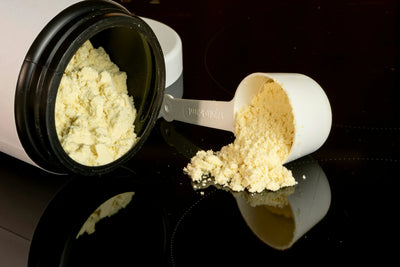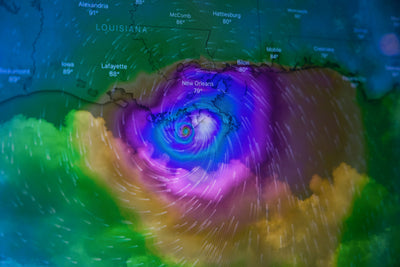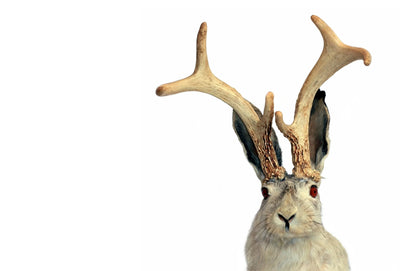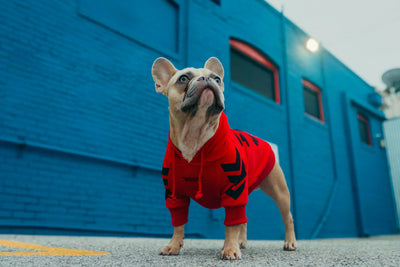Introduction
While most of us struggle to keep our dogs slim, some dogs need to gain a few kilograms. Sounds simple enough, right? Actually, it isn't! While thinness is usually a sign of a healthy dog, if the lack of weight is caused by nutritional deficiencies, it requires special attention. Like weight loss, weight gain requires scientifically controlling calorie intake to ensure that your dog is taking in more calories than it is burning. In order for your dog to gain weight in a healthy way, the key is to choose nutrient-dense and energy-dense foods rather than relying on high-calorie but non-nutritious junk food.

In this article, we will introduce you to 10 foods that can help your dog gain weight quickly and healthily. These foods are not only rich in protein, healthy fats and carbohydrates, but they also provide the vitamins and minerals your dog needs to ensure weight gain along with your dog's overall health.
10 Best Dog Food for Weight Gain
1. Lean Meat
Lean meat is one of the best foods to help your dog gain weight. Lean meats such as chicken, turkey, and lean beef are rich in high-quality proteins that can help your dog gain muscle mass instead of fat. The amino acids in lean meats also promote muscle growth and repair. It is recommended to cut cooked lean meats into small pieces and mix them into your dog's daily food, making sure you don't overcook them to retain the nutrients.
2. Rice
Rice is an affordable and easy-to-digest source of carbohydrates that can provide your dog with extra calories. Cooked white or brown rice can be mixed with lean meat to create a balanced meal. 100 grams of cooked rice provides approximately 130 calories and 28 grams of carbohydrates, which is a great way to increase your dog's energy intake.
3. Sesame paste
Sesame paste is rich in healthy fats, antioxidants and lignans, which have anti-inflammatory and immune-boosting properties. Adding 2-3 tablespoons of sesame paste to your dog's food not only adds calories, but also improves the health of your dog's skin and coat. The rich flavor of sesame paste also enhances the palatability of the food, which is especially suitable for dogs with poor appetite.
4. Salmon and oily fish
Oily fish such as salmon is rich in omega-3 fatty acids and high-quality proteins that can help dogs gain healthy weight while promoting heart and joint health. Cooked fish can be used as part of the main meal or as a highly nutritious snack. Feeding fish 1-2 times a week can provide your dog with extra calories and essential fatty acids.
5. Whole Eggs
Whole eggs are a good source of protein for dogs, rich in essential amino acids and healthy fats. The nutrients in the yolk are especially important for your dog's overall health. It is recommended that hard-boiled eggs (including the yolk) be chopped and added to your dog's food. 1-2 eggs per day can help your dog gain weight quickly.
6. Nut Butter
Nut butters such as peanut butter (without xylitol) are ideal for increasing your dog's calorie intake. One tablespoon of peanut butter contains about 100 calories and 16 grams of fat, while being rich in vitamin E and magnesium. You can spread a small amount of peanut butter on your dog's snacks or add it directly to the food.
7. Healthy Oils
Adding a small amount of healthy oil, such as olive oil or fish oil, to your dog's food can significantly increase calorie intake while providing omega-3 and omega-6 fatty acids to improve your dog's skin and coat health. It is recommended to add 1-2 teaspoons of oil to your dog's food daily, and the exact amount should be adjusted according to your dog's weight and activity level.
8. Banana
Rich in potassium, fiber and vitamins, bananas are a natural sweet treat that is safe for dogs. A medium-sized banana provides about 105 calories and 27 grams of carbohydrates. Bananas can be sliced as a snack or mashed and mixed with your dog's food to help add calories and nutrients.
9. Mango
Mangoes are rich in vitamins A, C and E, as well as antioxidants, which can provide your dog with extra calories and nutrients. Peel and core mangoes and cut them into small pieces for snacking or adding to food. The sweet flavor of the mango also enhances the appeal of the food for picky dogs.
10. Hummus
Rich in protein and healthy fats, 100 grams of hummus contains about 237 calories and 8 grams of protein. Mixing the right amount of hummus with your dog's food or as a snack with vegetable sticks can help your dog gain healthy weight.
Effective Ways to Help You Make Your Puppy Gain Weight
Puppies are an indispensable member of many families, and they are the most adorable and loyal companions in our lives. However, some puppies suffer from malnutrition and weakness, so we need to pay attention to provide them with enough nutrition during the raising process to make them grow up healthily. In this article, we will share 15 effective ways to help you make your puppy gain weight and make them healthier and cuter.
Observe your puppy's eating habits to find out what foods they are interested in. Offer them easily digestible, high-energy and high-protein foods such as meats and cheeses.
Offer your puppy the right amount of fat and calories by adding some high-fat treats or using high-energy pet food to increase their calorie intake.
Advice from a breeder or veterinarian can help you understand the nutrients your puppy needs. Add the necessary nutritional supplements as recommended by your veterinarian to ensure that your puppy is getting enough nutrients.
Provide your puppy with fresh water and food, and keep up with daily water and food changes. The food bowl should be kept clean so as not to spoil the puppy's appetite.
Give your puppy regular physical checkups to ensure they are healthy and thriving. Timely detection of any problems can prevent and treat diseases.
Allow your puppy to get a moderate amount of exercise, such as walking and playing. It will increase their appetite and burn energy to help them gain weight.
Adding foods high in fiber to your puppy's diet, such as pumpkin and sweet potatoes can increase their digestion as well as increase their nutritional intake.
Don't always offer your puppy snacks and candies as this will affect their eating habits. They should be offered healthy treats more often.
Clean your puppy's teeth regularly, using specially designed pet toothbrushes and toothpaste. This will prevent them from problems like bad breath and keep them healthy.
Sleeping time for puppies is important and they should be provided with a comfortable environment to ensure that they get enough sleep. This way they can digest their food better and gain weight.
Adding some greens to your puppy's diet such as spinach and kale can increase their nutrient content and also increase their appetite.
Pay special attention to your puppy's emotions and stress when raising them. Don't let your puppy feel lonely and bored, you can increase the play time with them appropriately.

Using some specially designed pet eating utensils can prevent your puppy from eating too fast, which can reduce discomfort and choking situations during swallowing.
Don't always ignore your puppy's body language, such as wailing when they are hungry and enjoying playing, which are all ways for puppies to express their emotions.
Raising a puppy requires patience and care, and we must provide them with enough attention and love for them to grow up healthily. By using the above 15 methods, we can effectively make our puppies gain weight and keep them healthy and energetic.
When raising puppies, we need to pay attention to their diet, health and emotional needs. With the 15 ways shared in this article, we can help our puppies gain weight in a healthy way and keep them cute and energetic. It is also a reminder to communicate with your veterinarian or breeder to ensure that your puppy is getting adequate nutrition and health care during the parenting process.
How to Fatten Up Dog?
Many pet owners desire to see their beloved pets in good shape with shiny coats, which not only makes them look healthier, but also adds to their cuteness. However, some pets appear to be too thin, which can be a sign of hidden health problems. Here are some tips to help your pet gain weight, but always remember that any weight gain program must be done under the guidance of your veterinarian. Improper fattening methods can lead to serious health problems such as pancreatitis and liver disease.
First, explore the root cause of weight gain.
Before embarking on a fattening program, it is important to identify the cause of your pet's weight loss. This involves taking your pet for a thorough health checkup to rule out the following possibilities:
- Parasitic infections: Parasites can rob your pet of nutrients, leading to weight loss.
- Digestive disorders: gastrointestinal problems affect the absorption of food.
- Thyroid disease: Hyperthyroidism speeds up metabolism and leads to weight loss.
- Chronic diseases: Certain chronic diseases may also cause your pet to lose weight.
- Picky eating or inadequate intake: This is one of the most common causes of wasting.
Only when disease factors are ruled out can an effective weight gain program be developed.
Second, adjust the dietary strategy.
Dietary adjustment is the core of the fattening program. High-calorie, high-protein and high-fat pet food should be chosen, and the following are some suggestions:
- Choose high-quality pet food: Choose high-quality food suitable for your pet's age and species, pay attention to the nutritional content table, and choose products with higher fat content.
- Increase the frequency of eating: Divide the day's food into multiple meals to increase your pet's appetite and food absorption.
- Add high-calorie foods: Add moderate amounts of high-calorie, easy-to-digest foods to your pet's staple diet, such as cooked egg yolks, small amounts of cooked chicken breasts, or veterinarian-recommended enrichment.
- Control the amount of exercise: For overly active pets, appropriately reduce the amount of exercise to avoid excessive energy consumption.
Third, auxiliary fattening measures.
- Regular feeding: Establish regular feeding time and cultivate good eating habits.
- Create a comfortable eating environment: Provide a quiet and comfortable eating environment to improve your pet's appetite.
- Observe your pet's appetite and defecation: Pay close attention to your pet's appetite and defecation, and consult your veterinarian if there is any abnormality.
Precautions
Do not increase food intake suddenly, but increase it gradually so that your pet's body can adapt to it. Take your pet to the veterinarian for regular rechecks to monitor weight changes and health conditions. Forced feeding may cause anorexia in pets, which is counterproductive. Many human foods are harmful to pets, such as chocolate and onions.
Pet fattening is a process that requires patience and care and must be done under the guidance of your veterinarian. Health is the most important thing, please remember, this article is for reference only, please consult a professional veterinarian for specific fattening program, according to the pet's specific situation to develop a personalized fattening plan.
Please consult a professional veterinarian for a personalized fattening plan based on your pet's specific situation. Only under the guidance of your veterinarian can you ensure that your pet gains weight safely and healthily.
Using Numbers to Determine if Your Dog is Overweight
Since the standard for determining the size of a dog varies according to breed and height, before finding out the standard weight of a dog, you must let the dog stand on all fours on the ground and measure its height from the ground to its shoulders.
After measuring the height of the dog, you can further determine the size and standard weight of the dog, which can be roughly categorized into 4 types:
Toy Dogs
Super miniature toy dogs are under 25cm in height and can be picked up with one hand, their small bodies are very appealing.
Common toy dog breeds include Pomeranian, Chihuahua, Maltese, Toy Poodle, Yorkshire, Butterfly Dog, etc. The appropriate weight for this type of dog is between 3-5 kilograms.
Small Dogs
The height of small dogs is about 25-39cm. Common breeds include Miniature Doberman, Pug, French Bulldog, Bichon Frise, Cherokee, Shih Tzu, Dachshund, Cocker Spaniel, Jack Russell Terrier, Hiloti, etc. The weight of these dogs ranges from 6-11 kilograms.
Medium-sized Dogs
Next is the more common medium-sized dog. Medium-sized dogs are about 40-64cm in height and have an average weight of 12-24kg.
The Shiba Shiba, a favorite dog, is a medium-sized dog. In addition to the Shiba Shiba, other breeds such as the Corgi, the Miguel, the Border Collie, the Doberman, the Bull Terrier, the Icelandic Sheepdog, and the Taiwanese Dog are also medium-sized dogs.
Large Dogs
Last but not least, there is the majestic large dog, which is about 65-80cm tall and weighs about 25-45kg. Common large dog breeds include the Husky, Dalmatian, Mountain Dog, Great Pyrenees, Giant Poodle, Mastiff, Newfoundland, St. Bernard, Golden Retriever, Labrador, and Akita, etc. Understanding the size of your dog will help you to understand its physical condition.
Understanding your dog's size is very important for weight management, and don't think that your dog is just 1kg overweight. For a 25kg large dog, a 1kg increase in body weight is equivalent to a 65kg adult gaining 3kg; however, for a 10kg small dog, a 1kg increase in body weight is equivalent to a 65kg adult gaining 7kg! Therefore, as an owner, you must take good care of your dog's physical condition in order to protect your dog's health.
Is My Dog A Standard Size?
Since the same breed of dog may have a different size, so in addition to the weight, you can further determine whether the dog is overweight by touching and observing the dog. Generally speaking, dogs can be categorized into 3 types: thin, medium and fat.
Thin Dog Body Type
Visually, you can clearly see the lines of the ribs, lumbar vertebrae, and pelvis, and when you look down, the waist is obviously sunken inward, and you can hardly feel the fat wrapped around the dog's ribs when you touch them with your hands.
It is recommended to supplement high energy food and water that can be easily absorbed and digested.

Standard Dog Body Shape
Observing the dog's body shape, you can see the ribs, lumbar vertebrae, and pelvic lines are visible, the waist is slightly concave when you look down, and you can feel the spine, ribs, and a little bit of meat on the stomach, which is a good body shape for a dog.
This kind of dog body type is very standard, please continue to maintain!
Overweight Dogs
The overweight type of dog is not only difficult to see the bones clearly, but also almost impossible to see the waist and abdominal lines, instead, you can find fat hoarding in the chest, spine, limbs or neck, no waist when you look down, the body is oval, and there is a full and soft abdomen.
The owner needs to use more force to touch the abdomen in order to feel the lines of the spine and ribs, or even not to feel the ribs at all.
If this is the case, it means that this is a fat dog, and it is recommended to improve the dog's body shape through exercise and diet!





